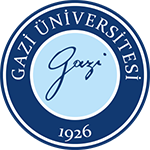ABSTRACT
The patient (ASAIII) was scheduled for laparoscopic cholecystectomy. She had a history of low ventricle rate AF and hypertension treated with an antihypertensive drug and a history of aortic valve replacement surgery during which she received isoflurane. Her preoperative laboratory findings were normal. In the laparoscopic cholecystectomy operation anesthesia was induced with midazolam, fentanyl, propofol and vecuronium and maintained with low flow desflurane anesthesia. The CO2 insuflation pressure was kept at 15 mmHg with peroperative 4L CO2. When blood pressure increased during the recovery period, a nitroglycerin infusion (1.5 μg/kg/min) was administered until the blood pressure was regulated. In the recovery room high ventricular rate AF developed and was treated with metoprolol succinate 2 mg. When blood pressure was 115/80 mmHg and heart rate was 93 beats per minute she was transferred to the ward. During the postoperative period the liver function tests and hemostasis parameters became abnormal. Gastroenterology specialists evaluated the situation as ischemic hepatitis. Erythrocyte suspension, fresh frozen plasma, vitamin K, metoprolol succinate and NaHCO3 were administered. She was discharged on the 13th postoperative day. It should be kept in mind that in geriatric patients liver function disorders may be precipitated by cardiorespiratory instability that may develop during the early postoperative period.



